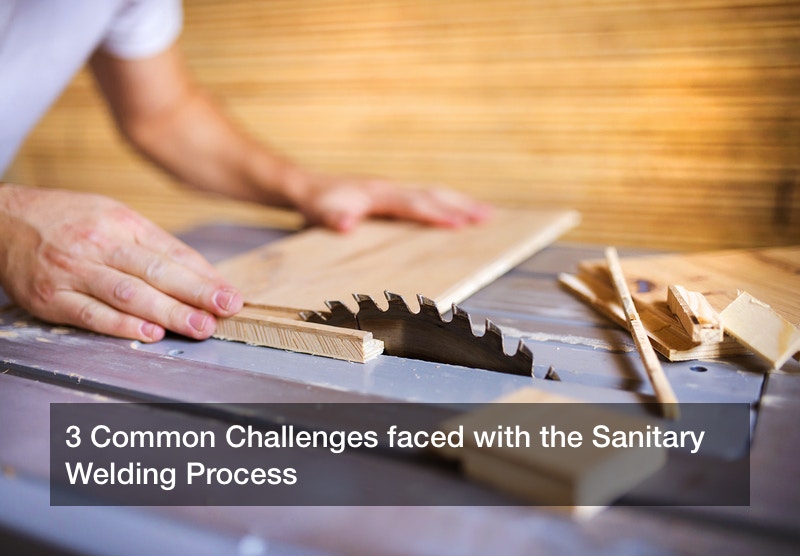3 Common Challenges faced with the Sanitary Welding Process


Sanitary welding is a process that has become common in the food industry. It is widely used in the manufacture of pumps, valves, and tanks. One condition for welded surfaces is that they must be grounded and finished to meet cleaning regulations.
An improper sanitary welding process is the biggest obstacle to hygiene in the food and beverage industry. It creates inconsistencies and faults that can cause contamination. Failure to meet the standards can be expensive for the business. It is, therefore, paramount for sanitary fittings to be compliant, especially when a welding process is involved.
Development of the Heat-Tint
Sanitary clamps, pipes, and fittings, must adhere to regulations and rules set for the food industry. One problem with welding is heat-tint. It affects steel surfaces and is usually caused by oxidation.
A heat tint occurs when there is too much oxygen that depletes materials, particularly stainless steel sanitary tubing and parts. Oxidation depletes the chromium layer, which protects the metal against corrosion and rust.
In sanitary welding, the degree of the heat tint can be analyzed from the color of the surface it affects. The color gives an indication of the susceptibility of the metal to corrosion. Dark blue tints have the biggest impact on the material’s ability to control corrosion.
One way to limit the development of a heat tint is to limit the heat. It is also important to pay attention to the level of oxygen gas in the system. Using argon as a backing gas contains the effect of oxidation during sanitary welding.
Oxide Islands
Another common issue with stainless steel sanitary welding, is the formation of oxide islands. They can be defined as the accumulation of impurities that form under the bead or weld surface. The impurities are usually oxides or nitrites which can solidify forming tiny pools of beads.
Oxide islands are usually problematic for metal alloys used for sanitary welding. They can cause freeze lines and beads on the surface. They are not usually present when using stainless steel 304, which is the most common form grade of the alloy.
However, when they appear on the stainless steel surfaces, the oxide islands are small and not easy to detect. Irregular freeze lines may develop on the material. In sanitary welding standards, such inconsistencies can allow for the accumulation of bacteria and contaminants.
The heat tint can also be triggered by other impurities other than oxygen which may include:
- The surface finish of the metal which affects the appearance of the heat-tint.
- Hydrocarbons in the backing gas used during welding.
- The moisture content in the argon gas.
Contamination and Surface Quality
Since the welding process must yield cleanable surfaces, there are surface inconsistencies that must be avoided. Cracks and crevices on sanitary valves and tubing allow for microbes to be introduced onto the equipment.
When materials with crevices and cracks are used regularly in the food industry, they develop a bio-film. The bio-film can grow to the point where it is hard to remove it from the material. Areas exposed to heat can provide the radiant energy needed for bacteria to grow. Microorganisms can accumulate in size until they come into contact with the sterilized part of the equipment.
For materials such as stainless steel, the inconsistencies can occur due to poor quality joints. Butt welds can overlap causing the joining pieces to stretch in unexpected ways. The stretching can cause cracks, porosity, or improper fusion.
As a rule, sanitary clamps and fittings should have a surface that is consistent to the adjoining parts. Several processes can be effective in removing oxide beads and lumps. They include sanding, grinding, abrasive blasting, and acid prickling treatment, amongst others.
In Conclusion
There are many aspects of the equipment that can be affected by the sanitary welding process. You need to analyze the critical elements of your set up to ensure compliance with regulations. Understanding the issues can save you a lot in terms of money and time lost. For more information, visit our website today.
